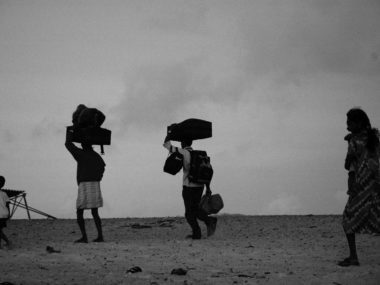Back in 2010 an Irish journalist, Mark Little, left his post as presenter on Irish News and Television to found a new media journalism company. He called it Storyful. You may never have heard of it, but you consume their product daily (indeed, if you are a news junkie, you consume it multiple times per day). This is a screenshot from the home page of their website:
They describe themselves this way:
Storyful is the first news agency of the social media age. We help our clients discover, verify and distribute the most valuable content on social media platforms. For Newsrooms: Storyful helps your editorial team separate news from social media noise.
Last year, on Storyful’s blog, Gavin Sheridan wrote about tips and tools for locating videos on a map. You should read the post, but I will highlight this bit:
One of the newer skills to be required in journalism is verifying amateur videos. When watching a video from YouTube for example, you still have to approach it journalistically and ask the five W’s. This post will concentrate on the ‘where’ question, and the tools journalists can use to establish the location in which a given video was shot.
Sheridan then explains how he verified the location of a video that purports to show an explosion in Talbisah, Syria, a town north of Homs.[1] Not long afterward Madeleine Bair posted this at the Witness blog: “Is it Authentic? When Citizens and Soldiers Document War,” announcing the creation of the YouTube Human Rights Channel. Witness describes The Human Rights Channel project this way:
WITNESS has partnered with the citizen news innovator Storyful to create the YouTube Human Rights Channel—a central hub for citizen footage of human rights issues. From the Arab Spring to the repression of a Russian punk band the Human Rights Channel amplifies the videos that document human rights violations and struggles for justice.
Back in January Chrisoph Koettl, Emergency Response Manager for Amnesty International USA’s Crisis Prevention and Response Unit, contributed to the Witness blog with a post that explored whether video posted to social media sites could assist with the documentation of possible war crimes in Syria.
Video is highly useful for identifying abuses related to the two core issues of the laws of war: (1) the treatment of non-combatants (civilians or prisoners of war); and (2) the prohibition of indiscriminate or direct attacks against civilians. Let me highlight two recent examples.
In October 2012, a highly unusual video came across my desk: Syrian soldiers in a helicopter, dropping a bomb over a city near Homs. Comparison with satellite imagery allowed me to confirm the attacked town as al-Dabaa. It illustrates what I believe is an indiscriminate attack, i.e., the attackers do not distinguish between civilians and legitimate military targets. The video itself shows that the weapon used, in this case a sort of “barrel bomb” pushed manually from the rear of the aircraft, can hardly be used to hit a specific military target. Instead, it appears that the attackers treated the whole town as one, single target.
Koettl continues:
Thanks to video, human rights organizations can cross-reference other evidence in reconstructing specific incidents, and swiftly condemn violations. This has become increasingly important: armed groups in Syria do appear to lack any basic training in international humanitarian law, and a strong public outcry could influence their behavior.
Most importantly, citizen video―embedded in thorough research and advocacy―can help secure justice. It contributes to impartial, independent investigations, which are often the first step in providing accountability through domestic or international trials. The most recent report by the UN Commission of Inquiry for Syria references video evidence over a dozen times.
In February he wrote another post, explaining how social media is transforming human rights monitoring, writing:
Social media is increasingly helpful to not only monitor emerging human rights emergencies, but also to uncover incorrect information. A recent example is when Twitter helped me to spot incorrect contextual information on a newly uploaded execution video from Syria. This is just one instance in which crowdsourced expertise from social media can open up new opportunities for human rights organizations.
New tools to assist human rights monitors in their work are being developed as I type. These are but two examples Koettl mentions:
thanks to Witness, a groundbreaking prototype for a photo and video authentication app (InformaCam) is currently under development. A related mobile app (by Physicans for Human Rights, DataDyne and InformCam) “will equip doctors and nurses with critical tools for collecting, documenting and preserving court-admissible forensic evidence of mass atrocities including sexual violence and torture.”
This past summer I was able to play a small role helping field test an app that AI (USA) is a partner helping to develop that permits users to take photos that are immediately uploaded to the cloud and simultaneously scrubbed from their phones, thus limiting the user’s exposure to abuse for filming.
Where this all leads is unclear. As the ability to monitor abuses of rights improves, rights abusers tend to adapt, shifting their practices and tactics. But we know this much: there are interesting and exciting developments afoot.
@WilHMoo
[1] If you are interested in reading a more detailed account of the verification process, see this post by Brown Moses: The Process Of Video Verification – Rabaa, Egypt, August 14th 2013.







2 comments
Thanks. I’m going to write an article about these projects. do you have any other notes like about them? new one.